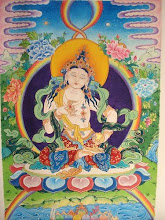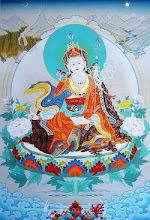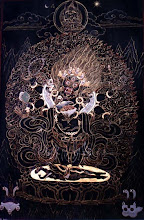On the sixth night I went to the teacher.
I have a problem, I explained, and I need your advice.
The old man nodded for me to continue.
I find myself entering a state where I can feel sustained subtle sensations on the body, but almost as soon as I do there's a loud noise behind me and I loose that state and have to start again. It's like walking along a path from which I get knocked off every few minutes. I get back on the path, get knocked off, get back on, get knocked off. It's tiring and I'm beginning to develop aversion . . .
You musn't develop aversion, he interrupted.
I'd very much like not to . . .
You have to develop equanimity.
Do you understand I'm talking about the man behind me? The man who won't stop coughing?
Let him cough. What you have to understand is that his coughing will end. It is anicca, he said using the Pali word for impermanence.
Theoretically, he had a point, that it was my job to develop the ability to ignore distractions. On the other hand, the cougher - the barker, as I came to think of him - was more than just a minor annoyance.
But, sir, there is a reason why we are asked to sit absolutely still for one hour. There is a reason why this facility is built in the village and not in the city. There is a reason we've taken a vow of silence for 10 days . . .
Your job, he interrupted, is just to observe.
I appeared there was no reasoning with the Guru-ji, so I thanked him for his time before leaving.
But it seems to me, and other participants I've since spoken to, that it is the teacher's job not just to advise students on how to meditate or on what qualities they should be striving to develop, but perhaps more importantly to manage the conditions under which they practice. And by most standards, this Guru-ji stumbled, both in his duties, and quite literally.

One morning as he shuffled from the meditation hall through the back room, his weight of age supported in his right hand by a walking cane, we heard him tumble and thump to the ground. For the remainder of the day and all of the next he was accompanied into the hall by one of the young volunteers, who opened and closed doors and made sure his path was clear. If only someone had been there to so conscientiously clear ours.
Behind me sat a young Indian man, probably in his mid-20's, who from the second day developed a rather serious hacking cough. There was no effort made to suppress or otherwise control these pulmonary convulsions; they erupted at full velocity every few minutes, a low barking rumble that for those of us seated in his immediate proximity reverberated through our by now very sensitive bodies.
Along with intermittent fits of sniffling and sucking snot down the back of his throat, it seemed reasonable to assume he had developed a cold. It also seems reasonable for the person managing the course to understand that his coughing was not a typical throat-clearing cough, but something more serious, and to understand his responsibilities: to protect the health of the other participants, to help relieve the suffering of the cougher, and to protect the carefully constructed meditation environment. So far as I know, nothing was done to provide the cougher with medication or medical consultation. Neither was he isolated to prevent possible infection of other students. Even the most stable meditators afterwards remarked on the continued disturbance caused by the cougher.

It was only on the ninth day, when our vow of silence ended and we could speak with the female meditators that we found how far the negligence extended. According to the two European female participants, there were language and cultural misunderstandings with the female Indian volunteer workers. The Europeans didn't speak Hindi, the Indians didn't speak English. The Europeans couldn't understand why they couldn't refuse not to take certain foods they didn't wish to or couldn't eat. They didn't understand why when fetching hot water from the communal cauldron they weren't allowed to help themselves, but had the water ladled out to them ration-like. More disturbingly, they couldn't understand how Vipassana meditators, particularly experienced ones, could erupt in displays of anger for small, unintended breaches of the rules, or what could lead them to petty acts of revenge, such as sprinkling water over someones's bedding. It wasn't just the Europeans, though, that were disturbed by this. Two Indian women, both experienced meditators, quit the course on the seventh day, along with one of the Europeans.
I don't hold any of this against the Guru-ji. Like all of the other teachers in the Vipassana tradition established by SN Goenka, he works free of charge, as a service to the human community. He has himself spent long years practicing and I'm confident of his pure intentions. But perhaps he has come to the point where he can no longer see the experience from the perspective of a new meditator, the person easily distracted, easy to rise to irritation and anger. Perhaps he has put too much faith in the method, and forgotten that the method is only as good as person using it.

For myself, I came away frustrated and rewarded. The former I've written about enough already. The reward came from doing exactly what the Guru-ji suggested, observing my irritation, and in spite of it experiencing moments of perfect stillness. This stillness, or absorption, I have heard best described as akin to being a smooth metal sphere resting on a smooth metal horizontal surface. Able to move in any direction, the sphere has no need or impetus to do anything but rest perfectly poised. I was sitting in just such a manner one day when the hour session was dismissed for a 5-minute break, but was so perfectly balanced I found myself unable to move, sitting through the break and into the next session.
Perhaps that level of concentration was possible only because the cougher was pushing me to redouble my efforts. So for that, I owe him and the Guru-ji my respect.

#
















































































